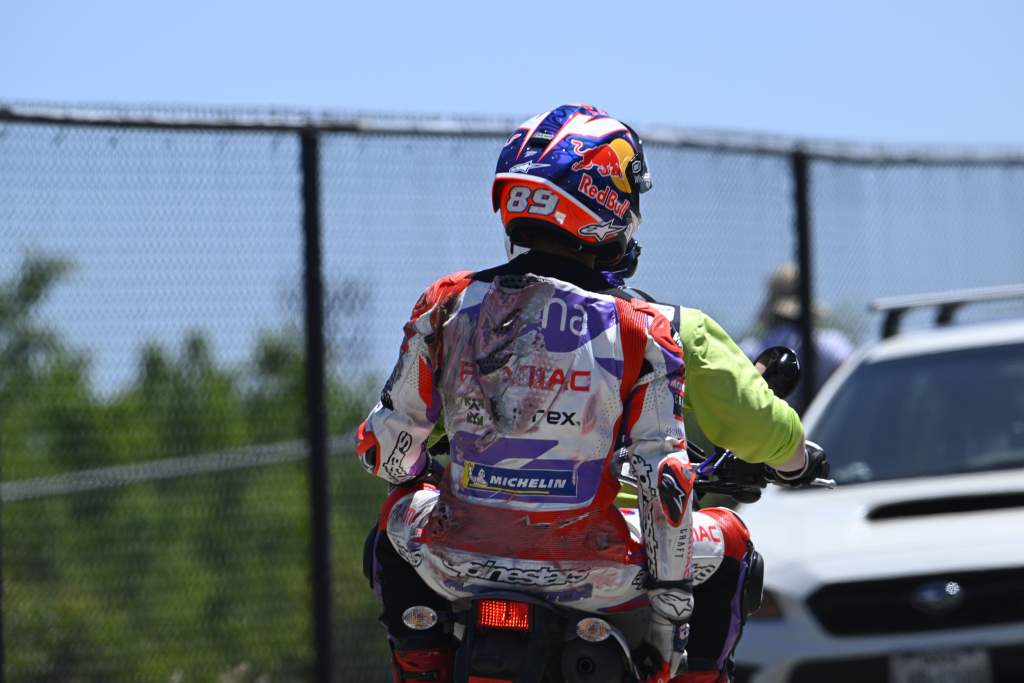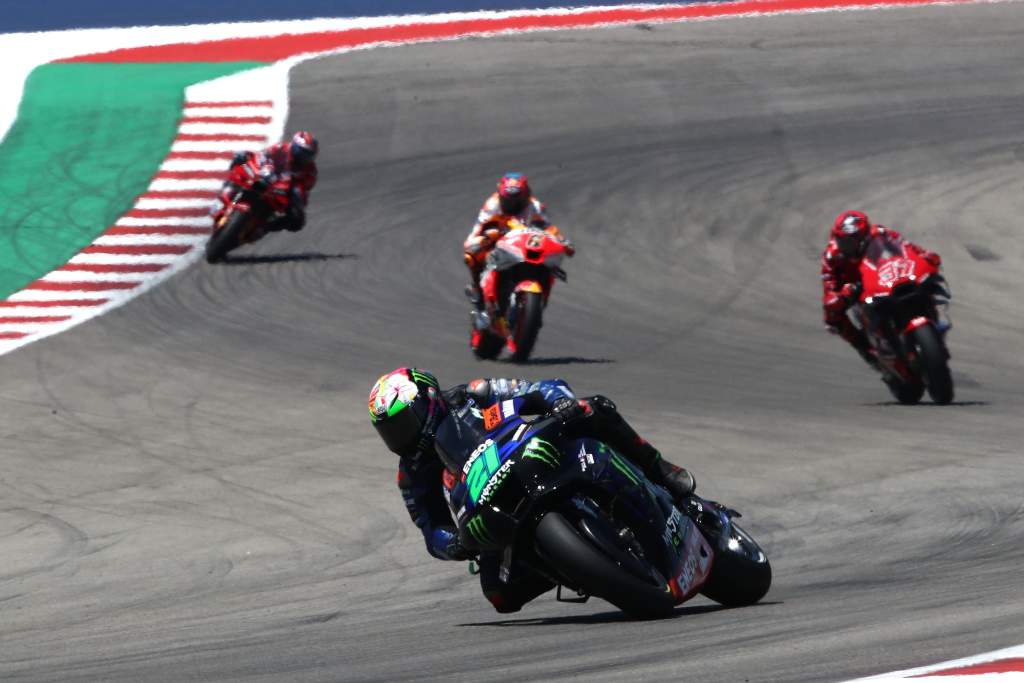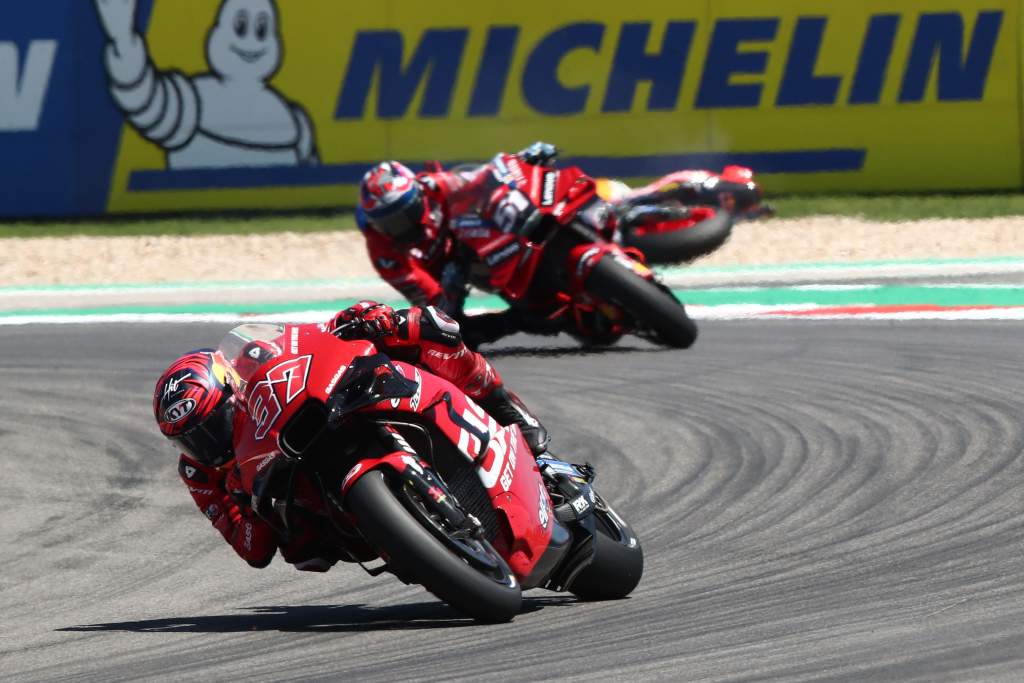until Abu Dhabi Autonomous Racing League

Sunday’s MotoGP race at the Circuit of the Americas was something of a crash fest, with no fewer than nine members of the 22-rider grid falling during the 20-lap battle.
But while the bumpy surface of the Austin track is hardly something that comes as a surprise anymore, it can’t take the full blame for the debacle – and there are multiple other factors that came into play.
Undergoing almost constant flux over the years thanks to the nature of the underlying soil, COTA remains a bumpy track. Knowing that, the circuit staff constantly try to work with it, reducing the worst of the issues at the expense of another major factor: consistency.
With the circuit now a mixture of multiple different types of asphalt as some has been replaced, other areas ground down to remove bumps and yet more left to age and not resurfaced in quite some time, riders face, as reigning world champion Pecco Bagnaia described it over the weekend, four different asphalts in one lap.
Then add to that the fact that Sunday’s race took place in very different weather conditions to the rest of the weekend, and you’ve got something of a recipe for disaster.

Running in cooler temperatures from Saturday’s sprint but with high winds at the open and exposed Texan circuit, it presented a whole new challenge for the riders that contributed significantly to catching plenty of them out – including then-race-leader Bagnaia.
The temperature change meant that rather than starting Sunday’s race with a good stockpile of data amassed throughout the weekend (including, crucially, from Saturday’s sprint race), the riders went in somewhat blind – triggering, according to Yamaha racer Franco Morbidelli, unexpected results.
“Today was very cold, with a cold wind,” said Morbidelli on Sunday. “And first of all, the grip of the track doesn’t help because it’s not great.

“We saw many crashes in Moto2 and Moto3 as well. It was difficult to collect data that would help you for the next session this weekend, because the changing of conditions was crazy.”
Alongside both the changing conditions and the high wind, there was another factor to contend with: the effects that all of that had upon the series’ Michelin front tyres.
With the bikes and tyres moving around more than usual and on a difficult surface, Tech3 Gas Gas rider Augusto Fernandez said it meant that he ended the race with front tyre damage that looked more like a well-used rear.
“We were struggling a lot with the front,” explained the rookie on Sunday night. “We were losing the front everywhere, and had a lot of problems managing it.

“Yesterday, the temperature was much higher, and we didn’t struggle that much. Today, we could see the wear of the front, the mark on the right side. Like it was a rear tyre, like when you break up a rear tyre.”
However, as KTM rider Jack Miller (one of the fallers) admitted, the conditions were the same for everyone – and some of the crashes were just down to the racers themselves not doing a good enough job of managing conditions at what is becoming one of the series’ most treacherous circuits.
“It’s just down to the track and me pushing at that point in time,” the Australian admitted, “as was Pecco’s and as was a lot of those boys at the time of their crashes.
“This track is slippery and it’s unforgiving, and you had to ride with a little bit of margin. It looks like [winner Alex] Rins was able to do that throughout the weekend.
“Even in Argentina when the grip levels were so low, you can have a moment, stick your elbow out and pick it up again. I feel like that’s how most of us roll.
“But here, as soon as you put your elbow on the ground the bike starts turning around behind you and the front starts to tuck.
“You can hold it on your elbow as long as you want but it’s not coming back.”

